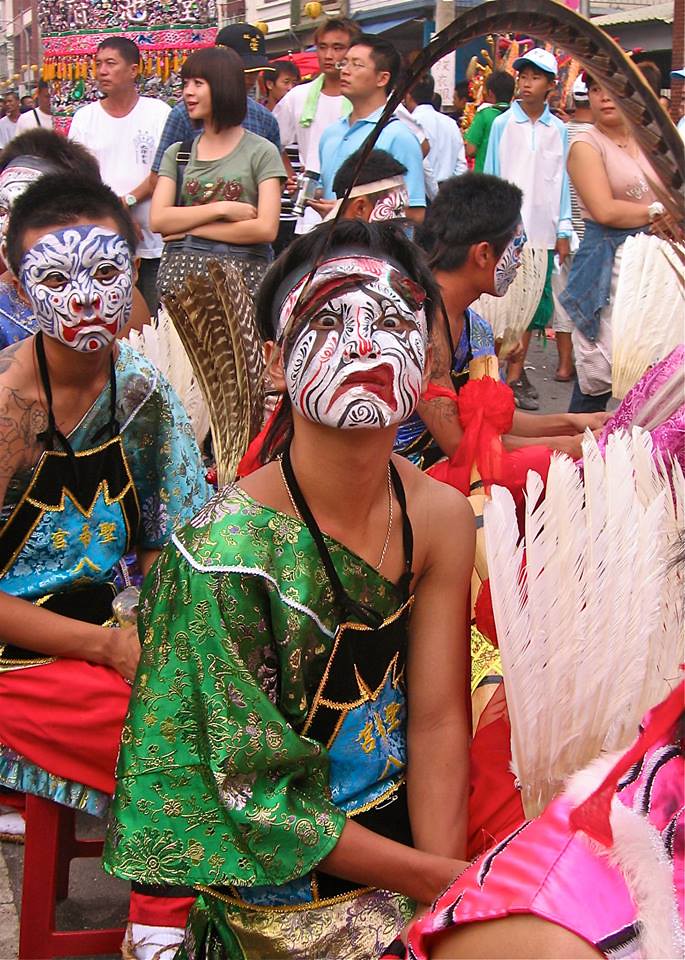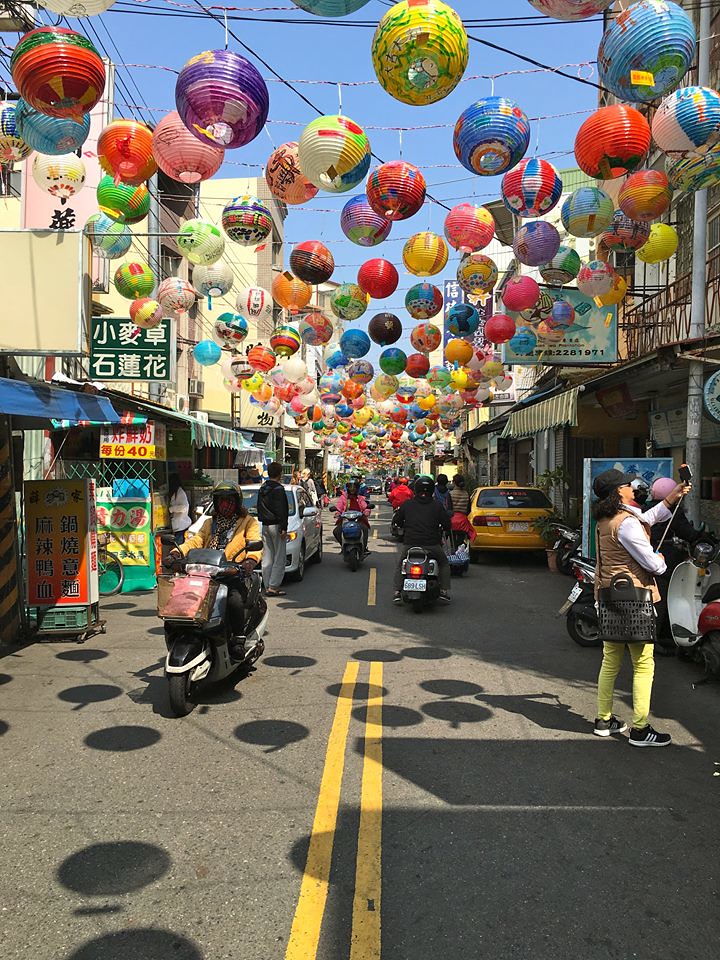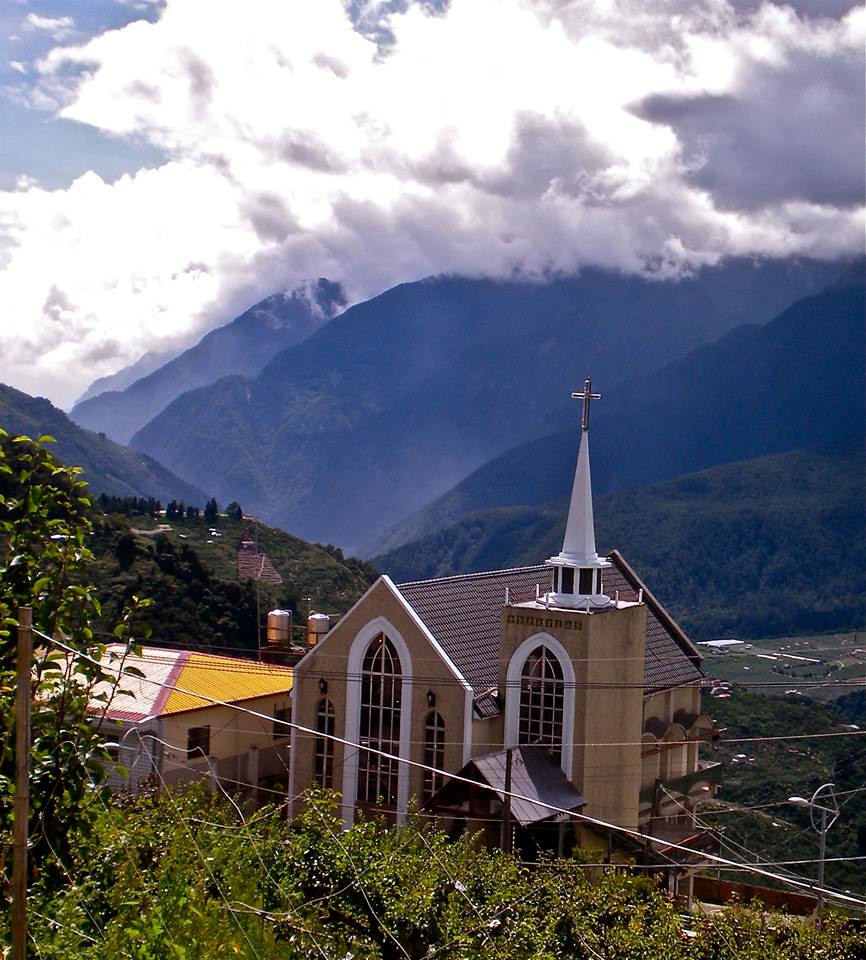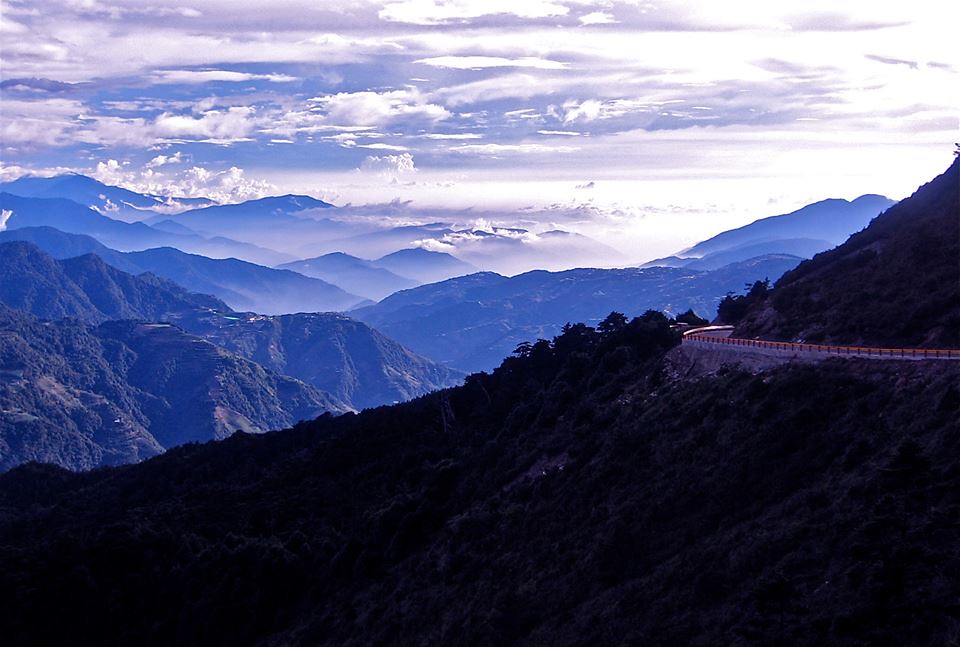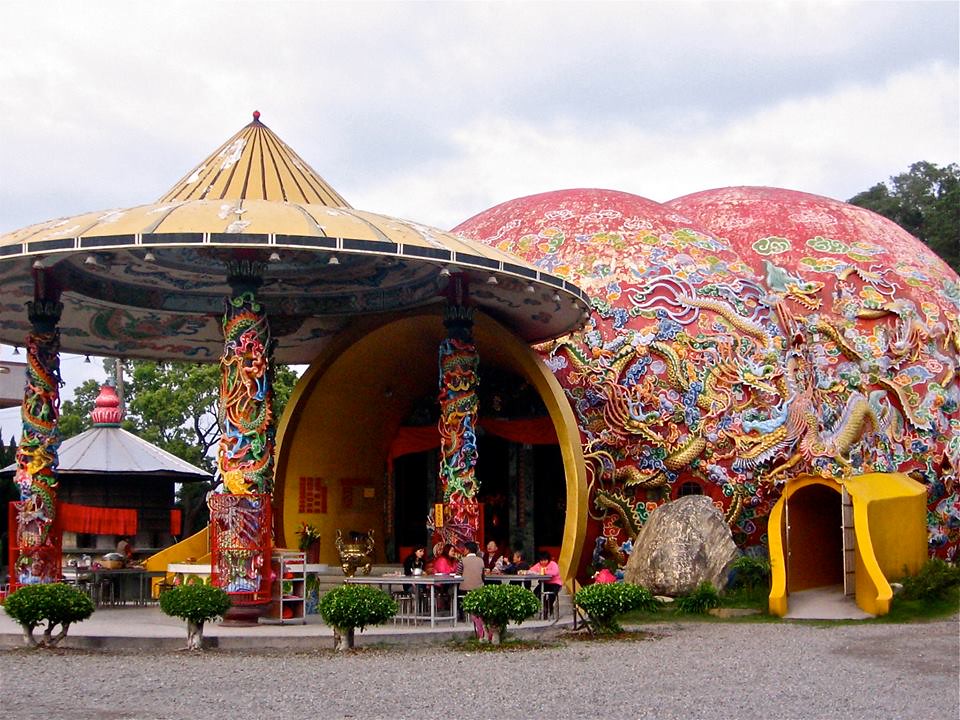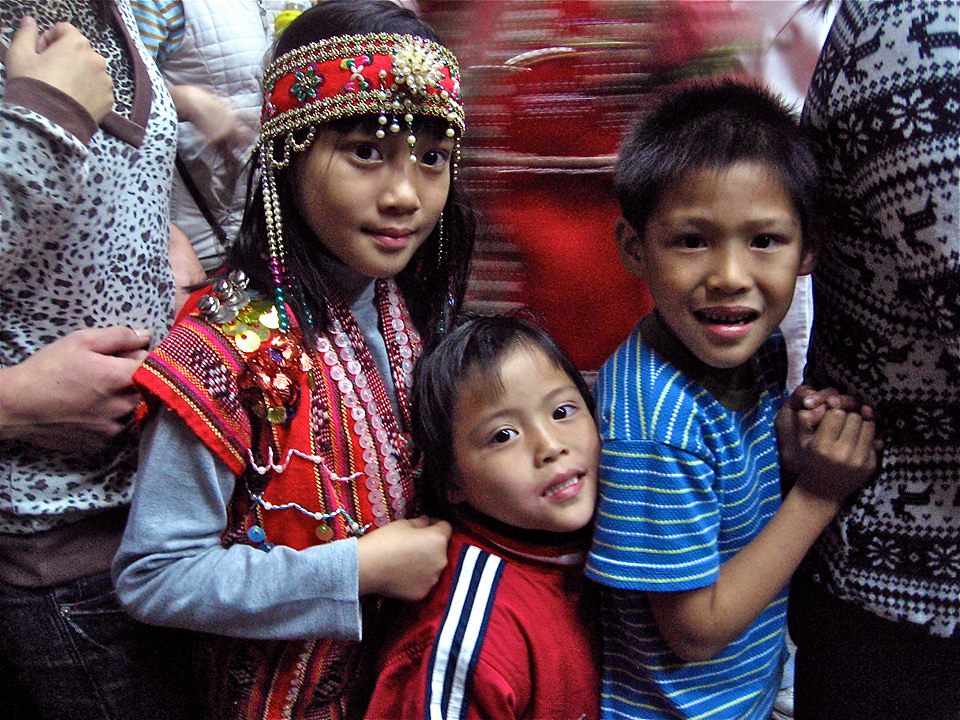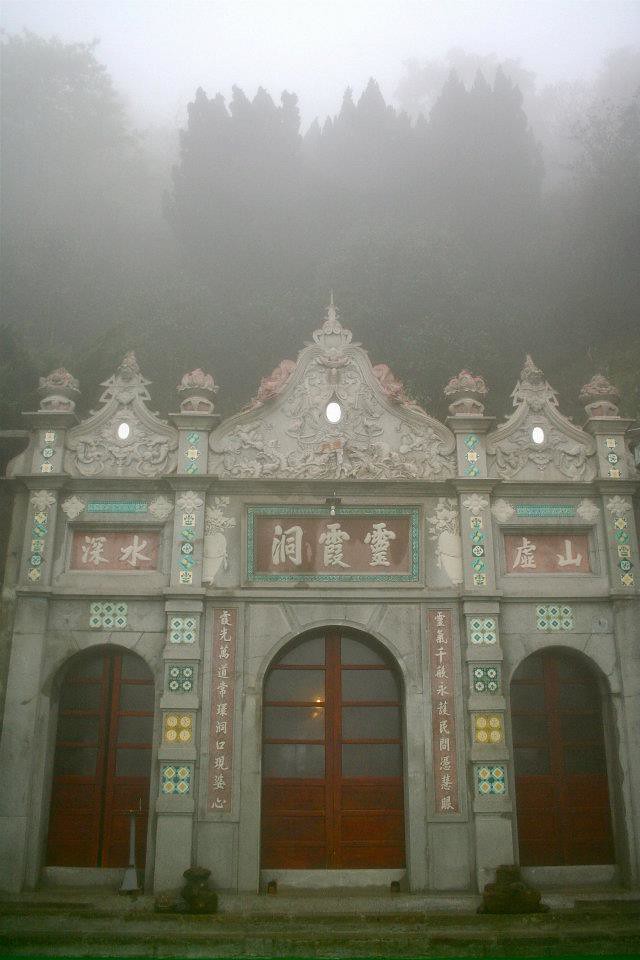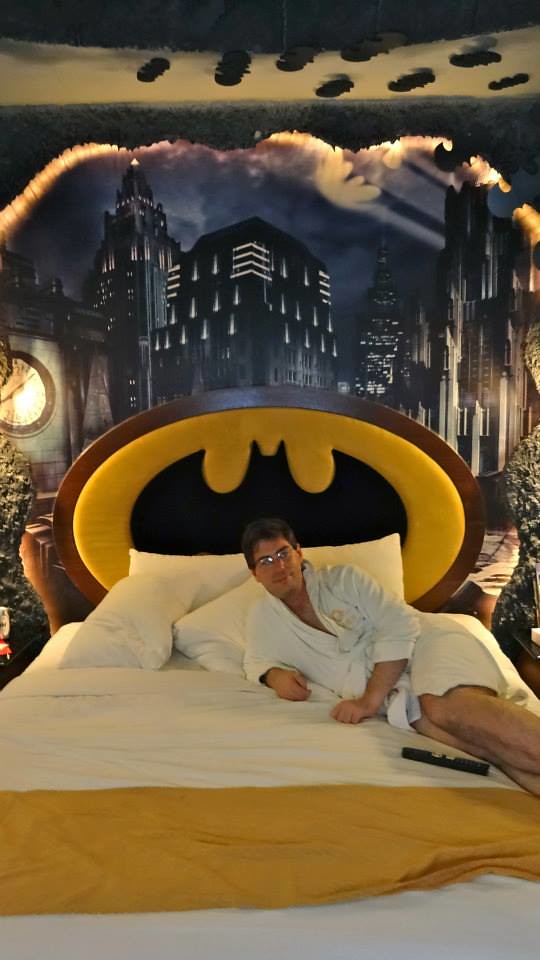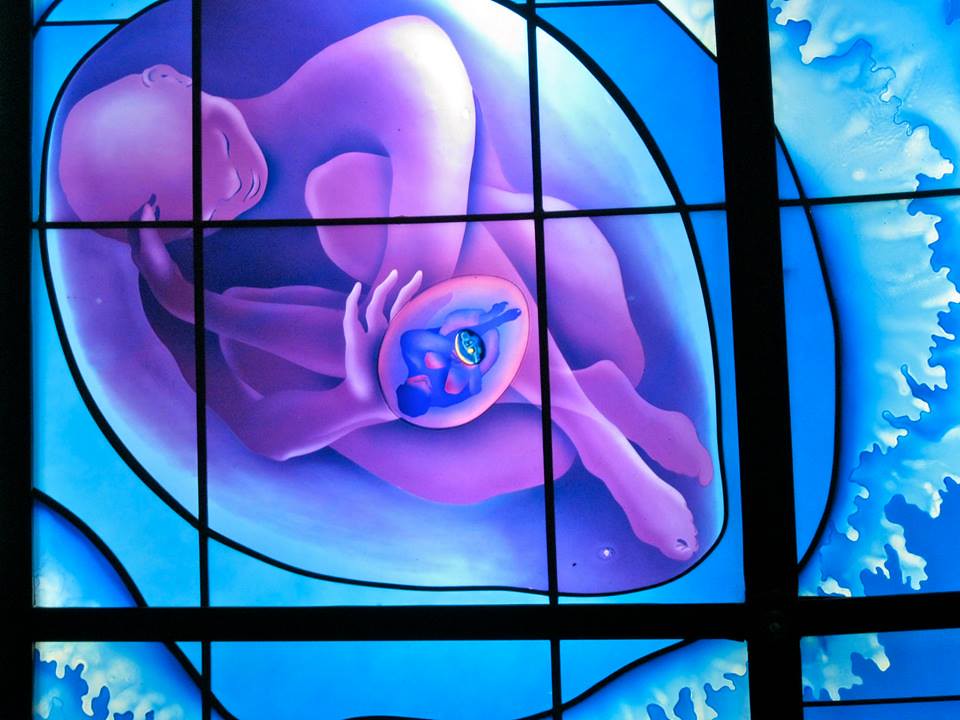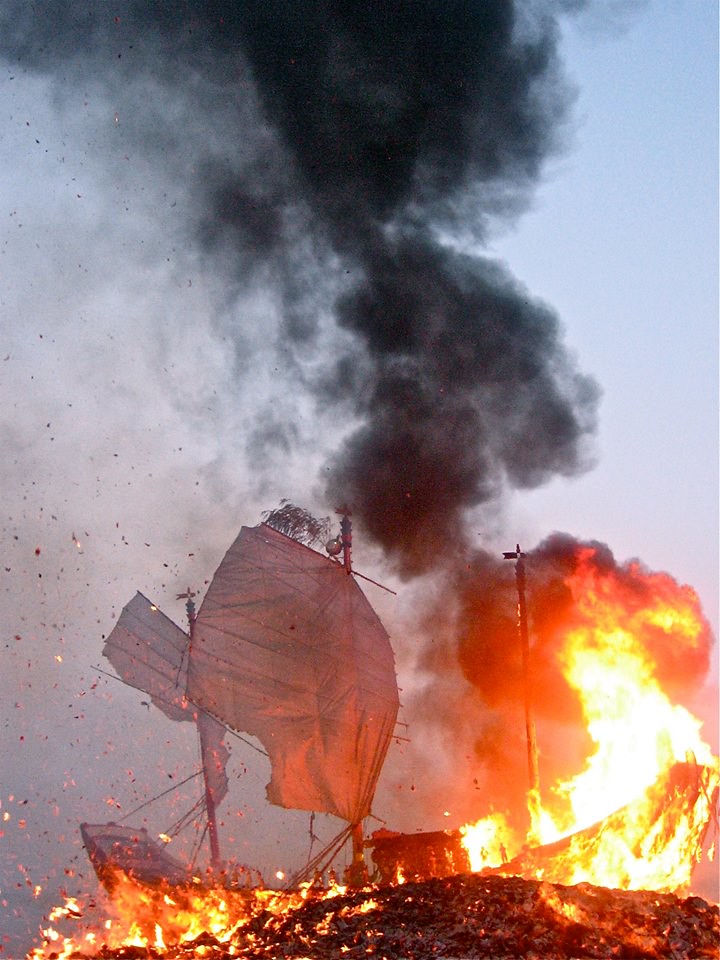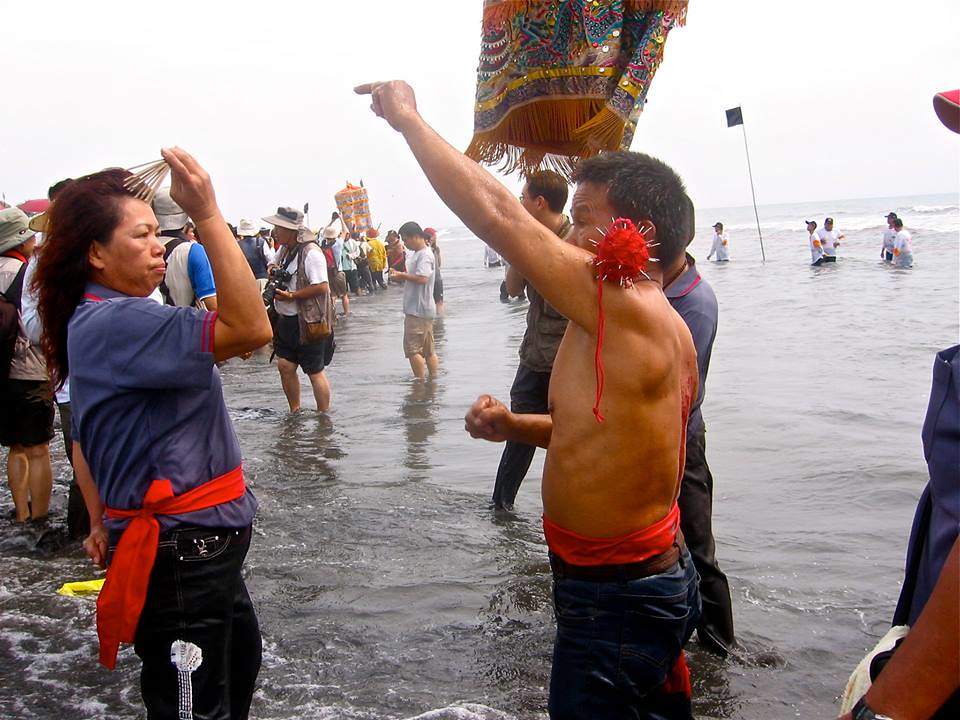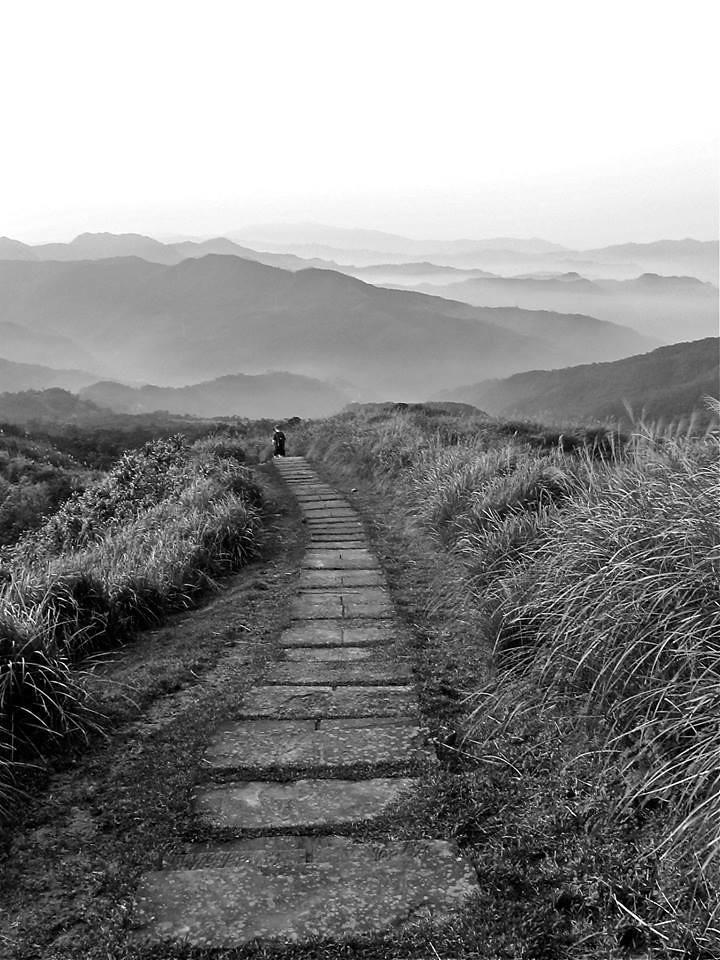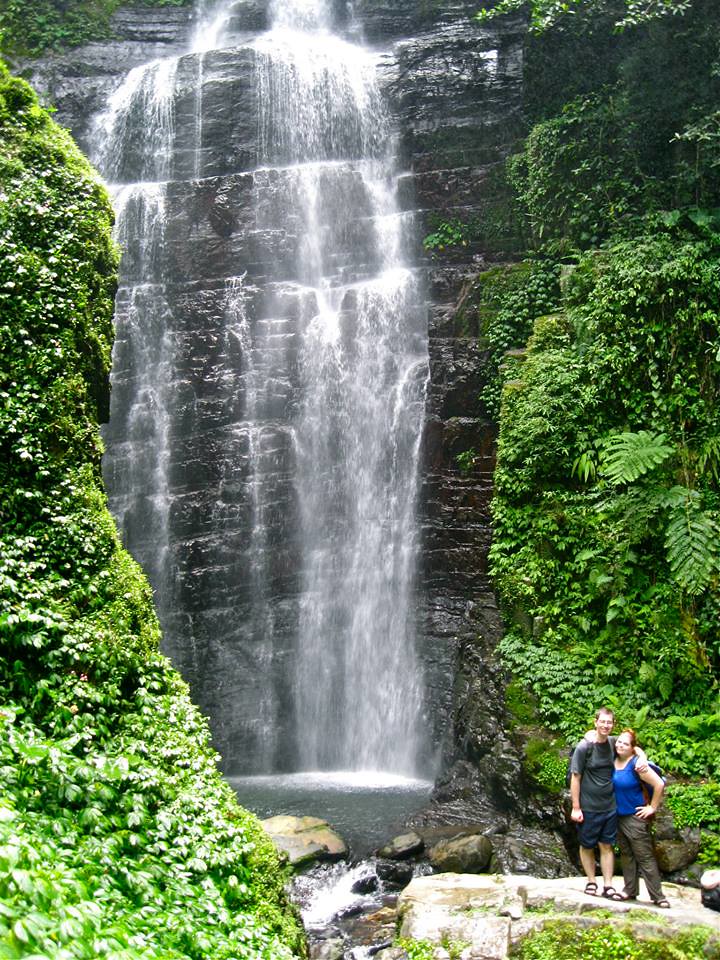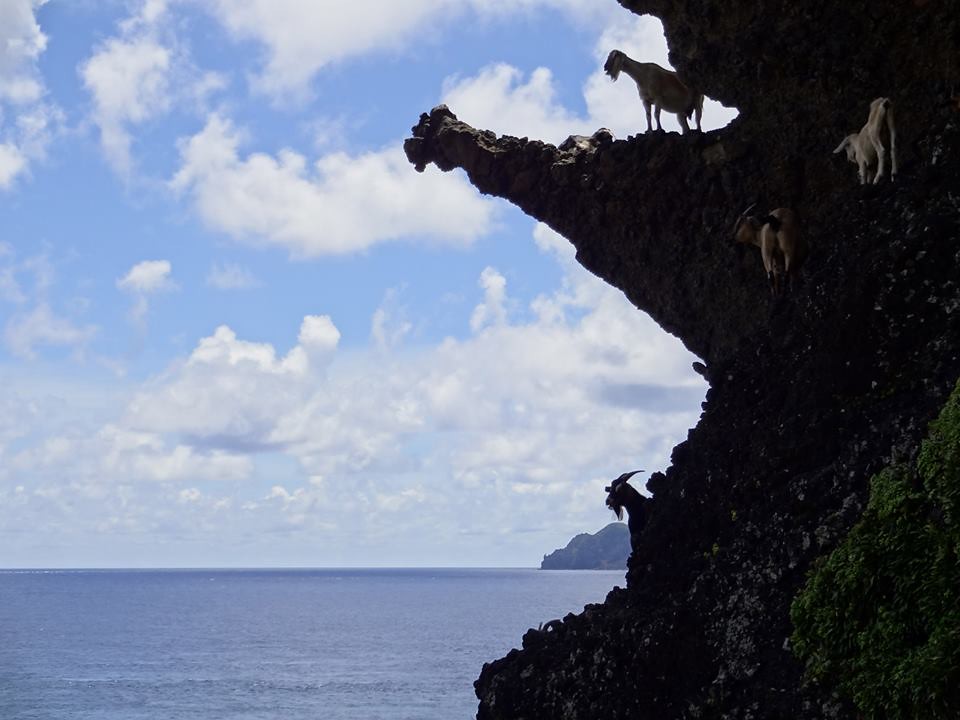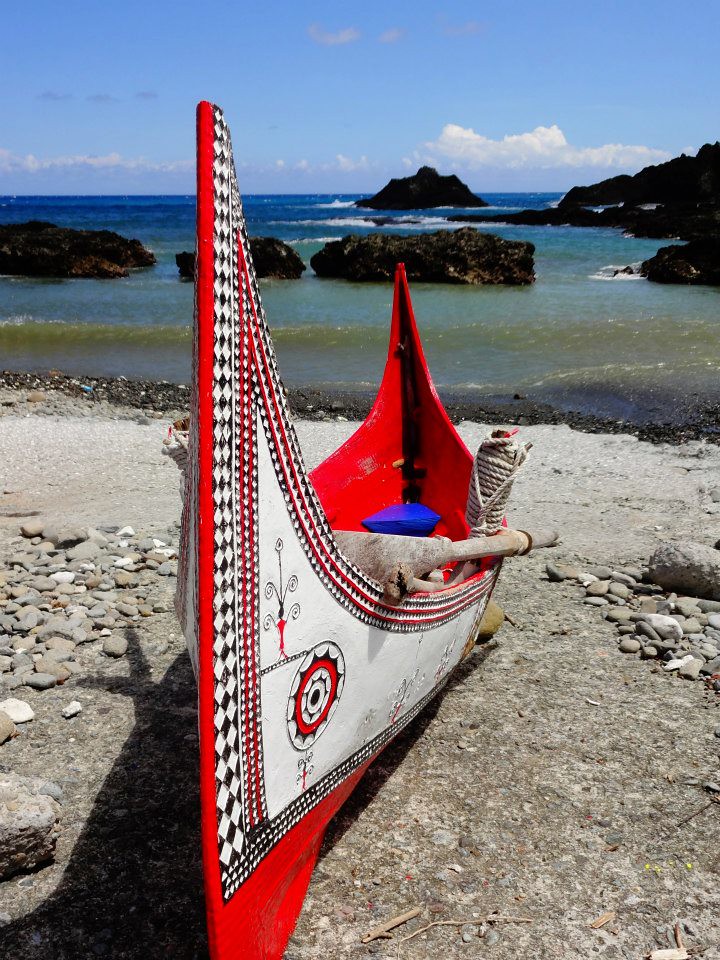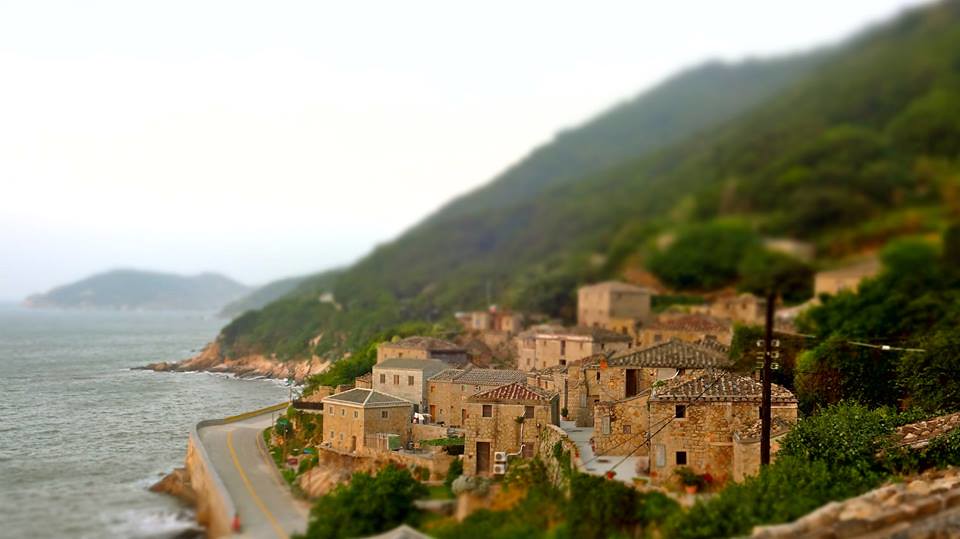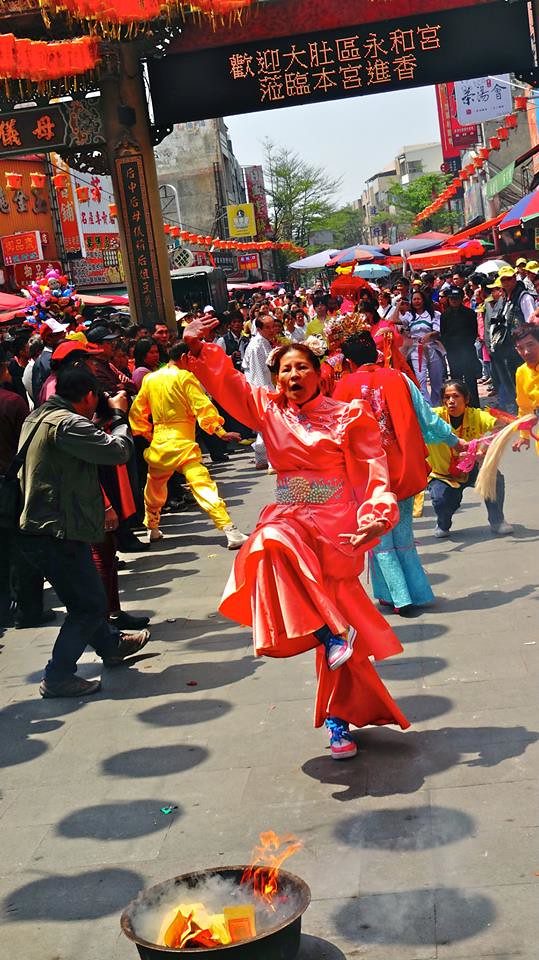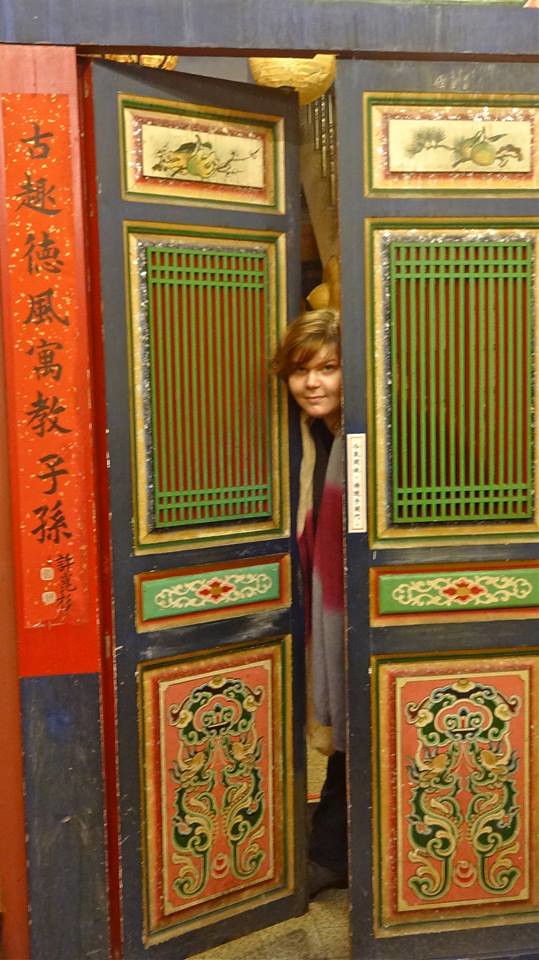
I have a lot to say about our trip to Matsu the week before Mid-Autumn Festival (the long weekend was all booked out in terms of flights and hotels - turns out we lucked out, as most of those flights certainly never took off thanks to the typhoon).
Considering the fact that my other interesting domestic (as in, in Taiwan) trip this year was to see the kick-off ceremony of the Matsu pilgrimage in Dajia, near Taizhong, I feel like 2013 has been the year of Matsu - the year of me, consciously or not (I'm not really sure), following Matsu and her influence around Taiwan.
Matsu Village (Nangan), where Matsu is said to have washed ashore, and Jinsha (a great place to stay):

The goddess
Matsu (
the same one I followed the pilgrimage of in Dajia earlier this year) is said to have washed up here after drowning - in fact, the beach she's said to have washed up on fronts a town now called Matsu, which has a statue of Matsu (above) whose lantern lights at night. In Magang Temple, overlooking the water, is an old stone coffin set into the floor. Engraved on it are phoenixes - it's said that this is Matsu's grave (others say it's her clothes, or the brother of hers who died when her meditative trance was broken as she was saving her father and brothers from drowning).

I strongly recommend staying in Jinsha, the tiny, picturesque town a short drive south of Matsu (you can drive between them both on the tiny seaside road - don't try that at night - or on the "main boulevard" of Nangan). It's got better accommodation than Matsu village itself - the
Jinsha Culture Village (0928812879 or 0836-26190) and the
#1 Youth Hostel are in traditional buildings next door to each other and are probably your best bet on the island. Jinsha doesn't have a lot - one restaurant, really, and a shop for snacks and old wine that you can bring back with you - but both offer breakfast in the morning, and the hostel has coffee. You're a short drive away from Matsu, however, where there are a few good eating options (including the excellent Dazhong Restaurant - see below) and a 7-11.

I also strongly recommend renting a
car, not a scooter.
A few things about that.
One, yes, I did learn how to ride a scooter just for this trip. No, I won't be riding one around Taipei anytime soon (they still look like death traps on wheels to me), but I can ride one now and am willing to on easy roads in the countryside or on outlying islands. That didn't work out for us, though, so we rented a car.
Boy are we glad we did - Matsu's the first place I've been to in Taiwan where a car (or scooter if you enjoy dying - I would have skidded right off one of those hills and down into the ocean) is 100%, no way around it, can't avoid it
necessary. I felt the hills in Nangan and Beigan were far too steep to safely ride a scooter up and down, so we rented the hotel owner's friend's old Toyota, and it was great. I'd say my whole "NO DRIVING IN TAIWAN" policy - I just don't feel safe doing it and I am not an experienced or confident city driver - has been overturned, but it hasn't. Driving in Matsu was fine. We felt safe. The hills were steep and the turns crazy, but that was never my problem: I freak out when there's too much traffic. Too many other people. I can't do it. A windy, hilly road is no biggie as long as it's not that busy.
You could get away with not renting a car, but I wouldn't. You could get a taxi driver's card and just use him as your personal driving service during your stay (I've done stuff like that), or you could try and take the bus...but really, it's not that hard to drive. The roads are nearly empty.
What struck me was this: we tried to go to Matsu 7 years ago. Our flight was cancelled due to fog (that's common) and we ended up in Penghu instead, where it's easy to get taxis to take you here and there, and the landscape is flat so you can walk more (the hills in Matsu are steep...and everywhere). 7 years ago I would have relied on taxis: no way would I have gotten behind the wheel of a car, even there. The fact that I was happy to just hop in the driver's seat (Brendan and I shared driving responsibilities: I don't really get the whole "the man drives" mentality at all) now is indicative of how much I've changed in this past near-decade. I am a much more confident person than I was in 2006, and I'm happy for that. 2007 me would have freaked out a bit at the hills and lack of transportation. 2013 me was totally fine with it.
By the way,
don't let anyone tell you that you can't rent a car in Beigan. You
can. More on that when we get to the Beigan photos.
 The beach where Matsu is said to have washed ashore:
The beach where Matsu is said to have washed ashore:
 Very high quality woodwork in the Magang temple:
Very high quality woodwork in the Magang temple:

Matsu is full of temples - most are either to Matsu (duh) or to the White Horse God - a god whose spirit is a general (or somesuch) whose body washed up ashore not far from where Matsu's did, but at a different time - and each is interesting in its own way. Some follow the Fujianese "Fire Wall" style - pictures posted below - which I've dubbed "Fujian Psychedelic". Others have roof/cornice (?) designs that look like a type of stepped pyramid, others still have unique roof and wall patterns not found in mainland Taiwan. All in all if you're even passively interested in temple design, or just think temple iconography is cool (and it
is cool), Matsu is a good place to stomp around looking for unique designs that you won't find in Taipei.

I also love this cool old building housing Matsu Village's "bus station". Note the torn Ma Ying-jiu poster at the bottom. We had great fun watching the 陰莖之戰(英金之戰)on TV - the people of Matsu, who lean dark blue, are just as displeased with Ma as the rest of the country. One person asked me as I watched TV "what party are you?" - quite straightforward, no? Maybe indicates cultural differences between Matsu and Taiwan? - and I figured, "hey, ask a question get an answer" so I told him "Well, DPP or TSU, but really, they're all terrible (天下烏鴉一般黑), really I just support those parties' ideas more than the people themselves". He gave me a thumbs-up - I guess I found the only green guy in Matsu!
Jinsha's one restaurant:

Pretty good local food here - yu mian (fish noodles), giant mussels/clams called "shenghao" - basic, rustic stuff. Tasty. I recommend it. They also have the locally made "aiyu" (transparent fig juice with jelly) which is refreshing on a humid Matsu day.
"Downtown" Jinsha:


It says "Iron Blood: Kill The Reds and Push Out Mao, Stop the Chinese and Soviet Communists".
I mean I agree, but really they both suck - the CCP and the KMT.
Matsu, with its military history (it was bombed toward the end of the Chinese Civil War, then bombed on "odd days only", and retained strategic importance even after bombing stopped, and was heavily militarized for years), is full of these vintage KMT slogans, painted and carved everywhere. You can explore the tunnels of Matsu (many of them, at least) but I find searching for these bits of history - as much as I disagree with them - to be even more fascinating.

Definitely get some 老酒 - old wine - while you are there. The store with the teddy bear outside, across from this wall of wine fermentation pots, sells it at NT200 or 250 a bottle depending on the length of fermentation of the wine.


Someone explained to me why Jinsha has brass instruments tacked up all over it, but I didn't really understand (something about a musical instrument factory, or shop, or a music school). My fault: they were telling me as I was perusing a map and I was only half paying attention. Perhaps a commenter could come weigh in.

This shop sells good local products you can buy and bring home.

Jinsha's Matsu temple, with gorgeous floor design.

This shot captures both our hotel (foreground) and the youth hostel (background) - both are good value for money (they're linked to above).

One of the best things about Matsu is that even on Nangan, which has the archipelago's greatest concentration of sights, there's not tons to do and nothing is terribly far apart. That makes it easy and fun to just drive around for the hell of it, exploring, enjoying the view and weather, stopping to eat or have a coffee...you can't not relax. We quite enjoyed just driving our little Toyota around, stopping in towns with traditional granite houses and just wandering and taking photos, maybe stopping to eat, getting lost in the lanes, getting exercise on the hills.
There are also a lot of cats on Matsu - notably, more than dogs in my observation. They tend to be street cats, but are clearly cared for and fed by people.



Do you see the little tortoiseshell kitty looking at us?
The decorative spouts (as below) in dragon, lion or fish shapes are popular home accoutrements. They almost certainly function as storm drains or runoff spigots, as Matsu gets a lot of rain (although the ground seems dry - the climate is almost Mediterranean, with dry rocky soil but humid air, at least when we were there - perhaps because the soil sits atop pure granite).
 The scenic drive between Renai Village and Matsu Village:
The scenic drive between Renai Village and Matsu Village:

I love this shot - look closely at the dip in the road. See those two figures? They're soldiers doing exercises (or just exercising for fun - who knows?). Matsu gets a smattering of Taiwanese tourists, very few foreign tourists, and is mostly populated by locals - many of whom still fish for a living - and soldiers, due to its strategic importance and overall military history.
People tell me that young soldiers doing their national service hope not to be posted to Matsu as it's far away from Taiwan. I wonder about that - can you think of a more gorgeous place to just take a nice run? And I hate running! Looks like it's a kind of paradise if you think of your posting optimistically, no?

Guess the age of this pavilion. Qing? Ming? Song?

...it was built in 1990.


Things on Matsu - even Nangan - close early. This is Matsu village at 8pm (tons of dodgy KTVs and Internet cafes for the soldiers). The only other open establishments were Da Zhong (seriously, eat there) and the 7-11, which closes at midnight.
I strongly recommend Dazhong (大眾) Restaurant in Matsu Village (same road as the 7-11, "uphill" away from the parking lot a bit, on the right). It's excellent and well-known, and rightfully so. Ask any local - they'll direct you:

Old Wine Rice Vermicelli (老酒麵線) - the best in all Matsu, I guarantee it. You MUST try this.

"Jiguang Bing" or "Matsu Hamburgers" - soft, sesame flavored bread rounds that you stuff with an oyster omelet of tender oysters, greens, onion and egg. SO GOOD. You won't find this stuff in mainland Taiwan, and if you do it won't be as good.
 Near the Beihai Tunnel (my photos in the tunnel weren't very good):
Near the Beihai Tunnel (my photos in the tunnel weren't very good):



 Matsu's famous "yu mian", or fish noodles (noodles made of fish paste and starch):
Matsu's famous "yu mian", or fish noodles (noodles made of fish paste and starch):
 Matsu's famous hongzao (red date cooked) eel and pork:
Matsu's famous hongzao (red date cooked) eel and pork:
 LOOOOOOOOSER!
LOOOOOOOOSER!
We drove over to this giant sign (it translates as "sleep with your sword ready until dawn"), the characters for which were originally written by Chiang Kai-shek, and which looms over the harbor in Nangan so all ships coming and going can see it. Under it (and pictured below) is a sad little old man (Chiang Kai-shek) looking at the China he lost.
I'd say I'm happy he lost it, but the folks who won it were even worse than his sorry self.

Poor widdle Chiang, stuck in Taiwan (he never liked it here, and his wife liked it even less), pining for China. Boo hoo. I feel so sorry for him [/sarcasm].
In truth, while people defend him as the "one who industrialized and modernized Taiwan and its economy", and I do see where some of the truth in that lies, I see him as the single worst thing to happen to Taiwan in modern history. He never loved Taiwan - his eyes were only on China. He never understood Taiwan and didn't want to. Taiwan is still suffering under his wrongheaded ideology, dictatorship and well-documented mass murder.
And yet he's memorialized. He has a memorial hall, he has statues, he's remembered and not always in a bad way. I don't think he should be: banish this asshole to the annals of history where we can learn from his mistakes (
it's thanks to him that Taiwan's not in the UN).
So you can imagine my delight when I saw this sad, lonely little man staring back at China.
LOSER! Not even Taiwan wants you.

That's China in the distance, by the way. It's very clear from a few points on the various islands of Matsu. At one viewpoint you can actually see cell phone towers and roads.
A temple in Niujiao:

Anyway, temple design, even inside, differs from that of mainland Taiwan:

 Wandering the streets of Niujiao:
Wandering the streets of Niujiao:



 The famous Furen Coffee near Siwei:
The famous Furen Coffee near Siwei:
 LOOOHOOOOOSER!
LOOOHOOOOOSER!

We stopped and got coffee at Furen (夫人咖啡) Coffee...a locally famous coffeeshop on the peninsula north of Matsu village in Furen village (夫人村), near Siwei. Drive up there, and past Matsu you start seeing signs for it - just follow the signs on down to the cafe. Get their house special - mild coffee (it doesn't need milk) topped with a thin layer of high quality, lightly salted cream. It's fantastic. Their shaved ice, covered in traditional dessert items (red bean, sweet potato gummy etc) is also tasty.


 Dongju:
Dongju:
The next day we took a boat to Dongju - this is one island where we truly could not rent a car - although I bet if we'd stayed there, we could have found a local with two cars who'd rent one out to us informally. As we were only going for a few hours we didn't have time to set that up.
So, we joined a small tour group. Our hotel gave us the number of Chuan Lao Da - 船老大 - 0933-814986 - who runs tours of Dongju. It's NT$1500 per group, assuming 5 people per group at NT300 each (they'll feed you for an additional NT300 each, or you can just figure out food on your own). Not wanting to pay the full NT1500 ourselves, we joined a group which we believed were all put together and didn't know each other. Turns out they were friends from Taoyuan who'd booked this whole three day tour through a travel agent so they wouldn't have to worry about their own transportation.
On the good side, they were friendly and didn't seem too annoyed by our intrusion into the group (we truly didn't know - I'll just go ahead and assume the tour guide asked first). We got transport around Dongju without being in some huge group herded around.

On the bad side, first, it was a tour group of slightly older people, which meant being herded from one visitors center to another to watch a presentation on the sights rather than actually seeing them (we'd drive by). I wasn't too interested in that (in fact during the first presentation I fell asleep in the visitor's center theater), so whenever we stopped I negotiated with the tour guide to just let us wander around and take photos, which is all we'd wanted to do in the first place, while everyone else saw a presentation. Why would you go somewhere to drive past something quickly and then go watch a presentation on it? That's dumb. But, it's apparently what some people want or expect. Okay. Well. It's still dumb.

It also turns out that the group was coming down with food poisoning, from (from what I understood of the conversation that was half in Taiwanese) oysters. So one person didn't get out of the van at all, one was in the fetal position on her seat by about halfway through, and nobody seemed to have any energy. By the end, only we and one other person in the group was actually getting out of the van...but at least there was no puking.

I felt bad for them - three days in Matsu, and one of those days ruined by bad oysters. We saw them again in Beigan, mostly recovered. The sickest of the lot was "resting in the hotel" though. Poor thing. Her whole vacation ruined!
Dongju was beautiful - there's not a lot to do, the fun thing here is really to just drive around and enjoy the view. The hills weren't too crazy and I would have liked to have rented scooters, but that was not an option for us (Brendan hasn't learned yet and I can't confidently carry him on the back - I'm still new at this), to just drive around and enjoy the air. All in all you can take the 11am ferry and come back on the 3:30 and pretty much see everything. You could even walk it, if you like steep hills and no shade (I don't recommend this - not so much for the no shade as the hilly terrain. It wouldn't be strolling).
Some photos from Dongju:

A "Fujian Psychedelic" ("Fire Wall") temple:



This little temple is
so damn cute:

View from the lighthouse:



Some soldiers stationed on Matsu were out here for fun. None had cameras or cell phones (as you may remember,
those are not allowed on army bases) so we took photos for them and I emailed them to the group a few days later. The friendly black goat came up for a visit.

Dongju is gorgeous and picturesque - too bad it's hard to get around:






We got back to Nangan before sunset, worked out a deal with the hotel owner's friend with the "rental car" to take it for the evening at a discount (worth it!) and drove around at sunset enjoying the view before stopping for dinner in Renai.
Back to Renai for dinner:

This was the only night in Nangan that we didn't eat at Da Zhong. This place was pretty damn good too - we ate at 鐵板小館 (Tieban 88 - call 083623531 or 0925096250 if you need directions) near the shoreline in Renai. It's in a restored granite house with a traditional wood interior, more beautiful upstairs with some great balcony seats. Although I feel overall that Da Zhong has the best food in Nangan, this place was great too, and I recommend it for the food and atmosphere.
They also have accommodation if you want to stay in Renai.



The most famous White Horse temple (白馬宮) in Ke Ting village just a few clicks north of Matsu village (walkable if you don't mind a hill). Just keep driving north from Matsu, the road will narrow, and on your left will be a big building with a parking area. Just past that is a little walkway - you could scooter it but don't drive it - down to the temple, which is closer to the shore. It's not far down but only visible from the main road if you're coming from the other direction (southbound).
 And the next day to Beigan:
And the next day to Beigan:

Now, don't let anyone tell you that you can't rent a car in Beigan. It is
patently false. You can. We did. What you'll hear at first is "there are no car rental agencies on Beigan, it's too small". That's true. But you don't have to rent a car through a car rental agency - on Matsu (
and Orchid Island for that matter) - most of the time you just pay someone who has 2 cars (or doesn't but doesn't need their car) to use it for a period of time - usually about NT2000/day.
On Nangan this was easy - they handed us a beaten-up Toyota and didn't even ask our names. On Beigan it was harder. First the hotel asked if we'd take a taxi around instead. Okay...I mean we were willing to. Then we said "so you don't know any local with two cars who can just rent us one for the day? We'll pay!"
"You can drive?"
"We can! We just don't think scooters are very safe, he can't really ride one well, but we are both pretty good drivers."
"Beigan has a lot of hills, more than Nangan."
"That's OK. We can handle steep hills" (a lot of the terrain isn't too different from the hilly driving conditions not far from Brendan's hometown) "it's just scootering....ah...no. But we CAN drive."
"Okay."

So she called someone up in Tangqi - turns out right across the street from the airport. If you fly into Beigan, exit the airport and look to the left. There's a big sign that says "scooter rental" on a building that has a green corrugated tin building on top. The shop itself is sort of like a pharmacy/variety shop, but they also rent cars and scooters (the sign only says 'scooters' but they have at least one car). We drive over there to rent the car. They think the 14-year-old local kid who drove us - hotel owner's son - was renting. When they saw we were, they were all "they can't drive here!"
Ugh. I have nothing to say about this except that at this point I realized it wasn't about there not being cars, it was kind of about racism, too. Or at least racial prejudice. A Taiwanese person could rent a car just fine, but they just didn't
want to rent to foreigners. I realize they probably thought "if a Taiwanese person wrecks our car, we can recover damages, but foreigners can just leave".
Um.
That may be the thought in their heads, but it's still racial prejudice. No thought to whether we were careful, responsible drivers (we are, almost to the point of comedy), or that we looked to be a clean-cut, straight-laced, "boring" (honestly) married couple in their early thirties. We weren't exactly a bunch of crazy people happy to get drunk, drive their car off a cliff and laugh all the way back to America.
It's also possible that that was their own car, and they really only had that one to drive as well as rent out. Matsu is not a rich place, I doubt they had the money to own a fleet of cars for rent. However, the fact that they'd have rented it without a problem to a 14-year-old Taiwanese kid but not two thirtysomething Americans still makes me wonder.
So we talked to them, convinced them we were responsible people and would care for their car (a minivan really, or SUV like car), gave them our IDs which were clipped into a binder full of IDs of people who'd rented scooters, and off we went.
Tangqi also has a 7-11 a short walk from the airport and car rental place - if you need anything, this is the time to stop. There's also a post office if you want to mail postcards...and don't believe guidebooks who say there's no transportation at the harbor or airport. There are taxis and scooter rentals at both.
We started in Qiaozai, a small town with "more gods worshipped than people". Qiaozai only has a few elderly residents - the "market" is a truck full of vegetables that drives through once a day - and a bunch of temples among its old stone houses. I counted six.






We stopped for lunch in Qiaozai - you can also get shaved ice here by the way, if you're hot and tired - and had an excellent meal at the one restaurant, which appeared to be made of driftwood (it wasn't, it was just old and weatherbeaten) and run by an old guy who sure looked like he knew his way around a fishing boat.

This was delicious. Get this:


Then we drove to Banli, which has a beach, a lovely restored old house you can wander in, a homestay connected to that house, and the
cutest damn Matsu shrine ever - seriously, this thing is
adorable. Note the differences in color, architecture and design from temples in Taiwan proper. This is pretty typical of the Matsu temple style.

Matsu's friends, Thousand Mile Eyes and Ears on the Wind - two demons who fell in love with her. She promised she'd marry the one who defeated her in martial combat. She defeated both and they became her friends and acolytes.


The beach at Banli. Walk to the left of this, towards the visitor's center, for a better, more accessible beach. There are shower facilities and a visitor's center, but no lifeguard. It looks safe, but don't take my word for it. Take care. The signs state you can swim there, but not here.

At the Banli visitor's center, you can watch even more movie presentations on Matsu, including in English (which is overwrought and oddly written but generally accurate).
I get the feeling that a bunch of money was just poured recently into Matsu tourism infrastructure. There are more taxis and scooter rentals, visitor's centers everywhere, a whole series of movies in a few languages on different parts of Matsu, new parks, museums and exhibition halls, beach facilities. Someone or some people clearly took the time to develop these amenities to make Matsu an attractive and accessible destination, offering things tour groups generally like (like those video presentations) but that individuals can also enjoy.
I hope that's not a precursor to casinos going up - something I had hoped local residents had voted down, but it turns out I was wrong - Penghu voted down casinos, Matsu didn't. I get why - jobs, jobs, jobs. I don't quite get the profit end, though: Matsu isn't a pleasant place to visit for much of the year due to weather, and for another chunk of the year heavy fog causes many cancelled flights and ferries. I can't see a casino making much money. But developers gonna develop, I guess. I heard they're planning to build this huge bridge to connect Nangan to Beigan and...well, who am I to stand in the way of progress? But I can't help but feel that the entire character of islands will be changed, and not for the better.
Overall, though, those lovely tourist facilities and infrastructure, on a quiet Monday as we drove around, seemed like they were ready to welcome tourists, but there were none to be had.
Of course, it was a Monday, and the Monday before a long vacation for which all flights and hotels were already booked. It makes sense that it'd be a quiet day in terms of tourism. If you know anything about Taiwanese culture, you know that people will take Thursday and Friday off, maybe even Wednesday, go to their destination, fly back Saturday afternoon or night, and "rest" on Sunday before work. It's the total opposite of American culture where we stretch our vacation to the limits of our leave. My students were shocked that I flew back Tuesday morning and taught a class Tuesday night, but to me it was really no big thing.
One place where we did meet a lot of tourists was Mount Bi (Bishan) - while we were enjoying the view, four tour buses stopped to regurgitate passengers who milled about in sports-fabric protective sleeves, hats, sunglasses and wielding all manner of cameras. Bishan has a great view of the airport, but sadly we didn't get to see any plane take-offs or landings (there are only a few flights a day).

During our entire trip we didn't see one other foreigner of any descent. There were plenty of Taiwanese tourists (mostly in tour groups - even in their own country people seem to prefer to sign up for a group rather than travel on their own, although in the youth hostel in Nangan we saw several independent travelers), but foreigners really don't make it out here often.
People are therefore more curious, more openly interested, more plainly "you're a foreigner!" (in Taipei nobody cares), kids stared more (that's OK) and few people speak any English at all. It would be a goo idea to go with a Chinese speaker, if you can (although you'll be OK if you don't - maps and such are available in English, some of the soldiers will speak it as they'll be from Taiwan, not Matsu, some hotel owners speak a little bit, and there's always charades. If we could get through eastern Turkey without speaking Turkish, you can get around Matsu).

We stayed in Qinbi, the most well-preserved stone village in all of Matsu. It's not totally empty, although a lot of the old house are abandoned. You can tell some money is flowing in, and there are restoration efforts underway. There are a few hotels and coffeeshops and one small restaurant (for anything else, you have to drive to Tangqi). More on that later.
We then drove under the airport (yes, that's what I meant) and across the causeway to Hou'ao, another small stone village. It's not big but it's picturesque and also has its own temple.





From Hou'ao we drove up to the old military installation, where there's a new exhibition hall of military relics and some placards of "oral history" which I found interesting. The center's not quite finished, but just as with Qinbi and Banli, you can tell some money is being poured into readying it for a greater volume of tourists. It was, along with Bishan and Qinbi, one of the only places where we did see tourists, mostly in groups, as usual.
From there, what's even more interesting is driving out to the various scenic viewpoints now open to the public. From here you can see the "Lion islands" (they're said to look like Chinese male and female lions):

...and other viewpoints that feature old machine guns, tanks and howitzers.
Two shady characters shaking hands over a tiny island. Can't help but feel this is a metaphor for Taiwan's treatment in the international community in general:


Here's me with a howitzer. The best part? Brendan was all "oh, a tank" and I was all "that's a howitzer, honey...at least I think so." And he looked at me like "how the hell do
you know what a howitzer looks like?" and I was all "my dad's into this kind of stuff".
 The famous stone village of Qinbi (definitely stay here):
The famous stone village of Qinbi (definitely stay here):

I really recommend staying in Qinbi. You may have to drive to Tangqi for a few things (really not a daunting proposition) but you can eat, drink coffee and enjoy yourself just wandering around the stone houses. There are a few hotels and coffeeshops and there's one restaurant - and they all have wifi. That's good, as if you have Taiwan Da Ge Da as we do, not China Telecom, you won't get a signal here, you'll instead pick up China's signals and be on their telecom network!
Most hotels will pick you up and even drop you off at the pier or airport (if you rent a car or scooter you can drive yourself and drop it off there, too). We stayed at the
Chinbe #25 Guesthouse, which I highly recommend (
083655628). . Pay for the sea view. Trust me.

The houses are under various stages of renovation - you can tell some money is coming in here to preserve and restore them, as well. They are clearly hoping that more tourists will come by to see what Matsu has to offer.










 I'm really not sure if they actually used to have an opium den here or if this was always meant to just be decoration:
I'm really not sure if they actually used to have an opium den here or if this was always meant to just be decoration:



...but do come to Matsu. I can't recommend it highly enough.
Richard Saunders' exhaustive guide (I don't agree on the 'scooter' thing, but for everything else he's on target):
Exploring Matsu (just keep clicking forward for the entire five-part series of posts)
